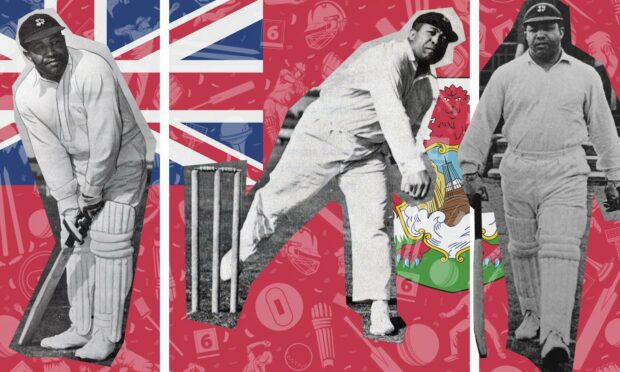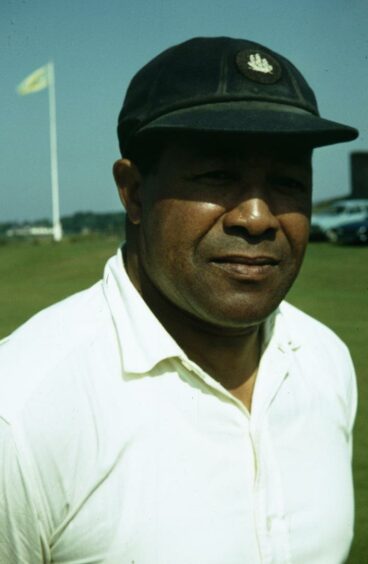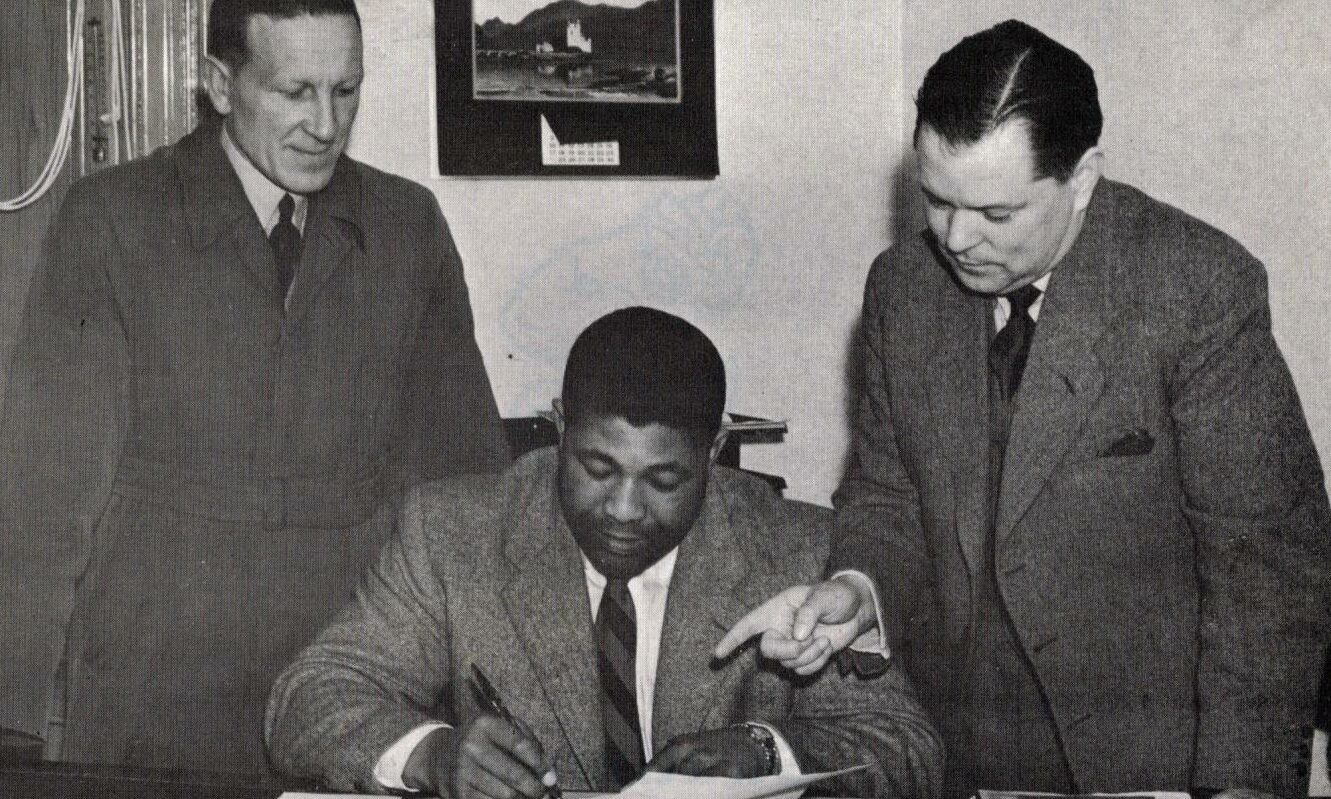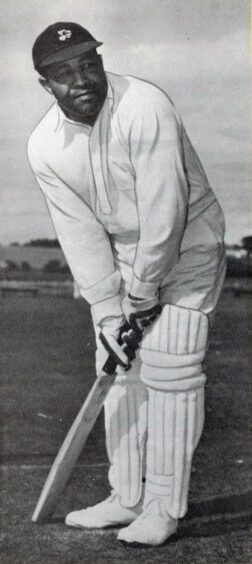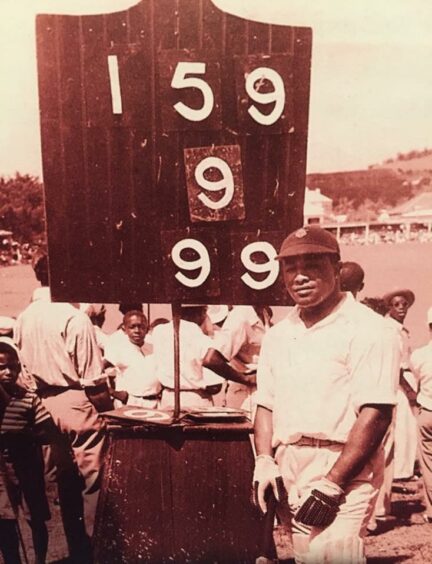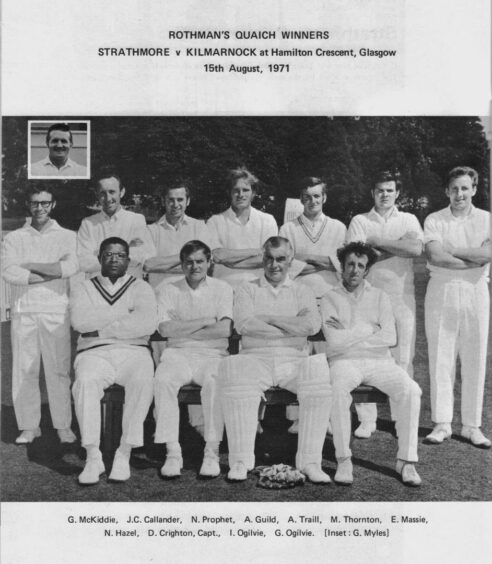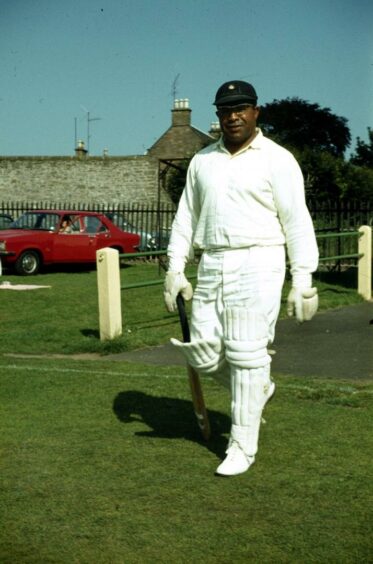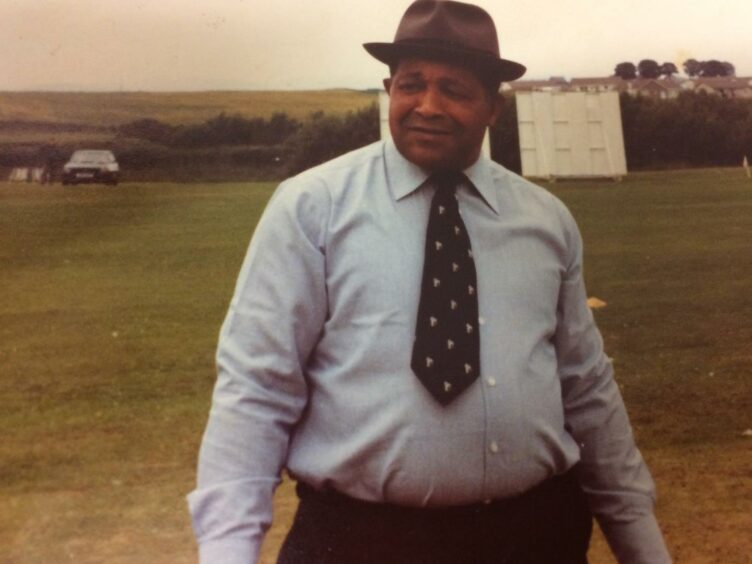He was a ball of fire from Bermuda whose name is still spoken with reverence among the north-east cricket community.
And Nigel Hazel’s son of the same name has opened his scrapbook and taken us on a journey through this far-travelled troubadour’s impact on Strathmore when he signed for the Forfar club in 1954.
He could have earned a fortune elsewhere in the Lancashire Leagues or even progressed to the English county circuit, but this flashing blade fell in love with Scotland and it was a passion reciprocated by his team mates.
In the 1960s, when he steered his previously unheralded club to national glory, the man nicknamed “Chopper” took a scythe to opponents far and wide and his personnel went all of 57 games without defeat from 1961 to 1965.
Then, in 1971, at the age of 50, he was the architect for Strathmore winning the Scottish Cup with victory over Kilmarnock in the showpiece tussle.
All the players – bar the charismatic Hazel as their professional – stayed in Forfar and had played through the ranks.
The Kilmarnock side whom they edged out at Hamilton Crescent in Glasgow had the legendary Australian swing bowler Bob Massie as their professional.
He just happened to be the man who took 16 wickets for Australia on his debut as the baggy-green brigade thrashed England in the Second Test of the Ashes series at Lord’s the following summer.
Wisden, long regarded as the sport’s Bible, reported in their 1972 edition: “Strathmore’s run in the Strathmore Union continued, and the Forfar club also won the Rothman’s Quaich national knock-out competition, breaking the long domination [of the event] by the counties and the Western Union.
“In the final, they beat Kilmarnock, who had a frustratingly unsuccessful season.”
And the manner in which they dominated that climactic contest 50 years ago proved what a tough nut Hazel was to crack.
A genial, enthusiastic individual off the pitch, he previously played for Aberdeenshire, as did his cousin, Alma Hunt, another proud Bermudian who later built a house called Mannofield in his homeland.
But there was never any sign of Hazel’s dedication diminishing as the years passed.
On the contrary, even as his appearances for the First XI began to dwindle, he was in his element coaching youngsters, offering his wit and wisdom to visitors to the club and demonstrating that, in his world, cricket was at the centre of everything he did.
There were thousands of runs, so many in fact that even he started to lose count. But those around him marvelled at his talent, technical expertise, unflappable temperament and genuine team spirit.
No wonder he lifted and inspired around him.
As one of the Bermuda newspapers noted in the early 1960s, Hazel was a force of nature.
And his son, who is also a stalwart part of the scenery at Strathmore, has never forgotten the myriad qualities he brought to the sport he graced.
As he told me: “My earliest memory of my Dad was his physique. He was powerfully built, but he was also a humble, kind and gentle man.
“I was also very aware, from a young age, about the tales of his feats alongside the respect and affection which he received and particularly in his adopted home town of Forfar.
“With Dad being the club professional and, later on, the groundsman/steward until his retirement, I spent many summer days on my holidays getting up early with him and going down to the cricket club to watch him at work preparing the ground for matches.
“It was at this early stage that I had access to bats, balls and equipment so it was probably inevitable that, sooner or later, I would progress to the senior teams and eventually play to a fairly decent standard myself.
“I must add that, in the early years, the game was never forced upon me. Only advice and gentle encouragement as was the case to whoever sought it.”
Yet it’s a measure of this quiet coaxing that Nigel Jnr is still turning out for Strathmore – “when work and wee niggles allow it” – as he approaches his own half century. That neatly sums up his father’s attitude: Sow the seed, plant the idea and you’ll cultivate interest in people from all ages and backgrounds.
And, of course, there is the memory of that epochal moment in the middle of September 1971 when Strathmore drove a bus through the status quo.
Nigel Jnr added: “The Strathmore Rothman’s Cup-winning team not only inspired myself, but many other youngsters from the surrounding area to take up the game.
“Sadly, it was one of my great regrets that I never saw Dad playing in his prime and I often wonder if his style of play would be more suitable to today’s shorter formats of the game [such as the T20 structure].
“Myself, his family and particularly the town of Forfar and his birthplace of Bermuda, are incredibly proud of him and the Strathmore team of 71′ and their achievements as a whole.
“On the 50th anniversary of their triumph, it feels befitting that a hugely talented group of local cricketers who were feared yet respected throughout the country are being remembered in this manner.”
Nigel and Alma shared the love
Nigel Hazel died in March 1996 at the age of 75. The news sparked sadness throughout the whole Scottish cricket community, such was the affection and admiration in which this adopted son of Caledonia was held.
That summer, officials at Lochside Park unveiled a plaque in his honour and renamed their clubhouse as the Nigel Hazel Lounge.
President Dave McGregor said: “Nigel was a legend in his lifetime, not just here, but in the whole of Scotland and his contribution was immense.
“He helped the club take the Strathmore Union first division title 12 times, the Three Counties Cup six times and the Rothman’s Quaich in 1971.”
The Press and Journal paid tribute, writing: “Nigel ‘Chopper’ Hazel arrived at Aberdeenshire in 1947 before establishing himself as a legend at Strathmore.
“The highlight of his time in the Granite City was when he trapped the great England Test player Len Hutton lbw for 10 while he was playing for Bermuda against the MCC.
“In his 18 years with Strathmore, he hit 19,430 runs in 592 games, including 28 centuries, two double centuries and 110 half-centuries.
“Nigel stepped down as professional in 1973, but stayed on as club steward and groundsman with the Forfar club until 1986.”
When the news emerged three years later that Alma Hunt had also passed away, it gained precious little coverage outside his native Bermuda.
Even the sight of the piper who performed a lament at his funeral didn’t elicit many raised eyebrows in the Caribbean.
Any yet, these two redoubtable characters were the sort of travelling players who paraded their gifts in so many far pavilions across Scotland.
Scotland’s elite professionals are currently in action in the ICC T20 World Cup in Oman. And they are determined to break down barriers.
But no more so than the many boundaries which were struck and traversed by this blithe man Nigel during his decades in Forfar.
You might also like:
Aberdeen’s 80s heroes could have lined up in Escape to Victory
Steve Archibald followed in Diego Maradona’s boots at Barcelona
